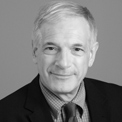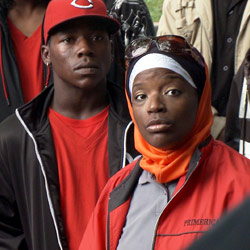PRESIDENT'S ESSAY

MacArthur Foundation Former President, Robert L. Gallucci
Learning for Change
Knowledge to Practice
Once we have understood the landscape, interpretive tools come into play—deduction and induction, theoretical models, and the professional judgment that comes with grantmaking experience.

Ameena Matthews, violence interrupter, in a still from “The Interrupters,” directed by Steve James and Alex Kotlowitz. Photo: Kartemquin Films
The problems foundations aim to address exist in social ecosystems. We try to identify the key drivers in each system and the points at which the system can be influenced for the better. How we will exert that influence is a “theory of change,” a set of hypotheses about cause and effect that guides how we will try to have an impact on the situation.
Our conservation and sustainable development grantmaking has recently gone through this stage of strategy development. After ten successful years in which we funded efforts to conserve biodiversity, largely in the tropics, we resolved to take a fresh look at new threats and opportunities. Among the many contemporary threats to natural resources, staff saw threats to freshwater ecosystems as the most pressing global conservation challenge on which we might have an impact.
In large watersheds and river basins such as the Mekong or the Great Lakes area of Africa, large populations are dependent on the natural services that rivers, forests, wetlands, and estuaries provide. Yet these areas are under severe threat from damming, forestry, and development. To change these dynamics, we concluded, simple conservation measures would not suffice—the human factors that drive development must be addressed.
The problems foundations aim to address exist in social ecosystems. We try to identify the key drivers in each system and the points at which the system can be influenced for the better.
If policy makers can be made aware of the economic value of the natural ecosystems they are damaging, we postulate, they can be persuaded that it is in their self-interest to adopt less harmful policies. This strategy relies on reaching and persuading elites, on the one hand, and on building strong conservation measures and an awareness of rights at critical sites, on the other. We are now developing plans to put this strategy into effect in targeted regions.
To know whether we are succeeding in this program, we are building a system of monitoring and assessment into the work that gives us timely and accurate information about vital trends.